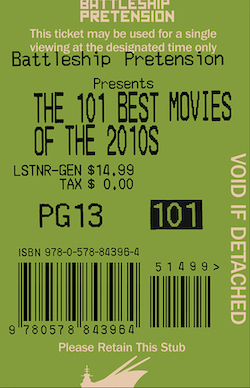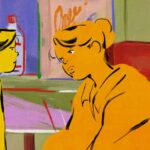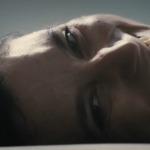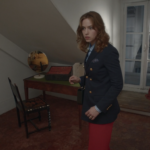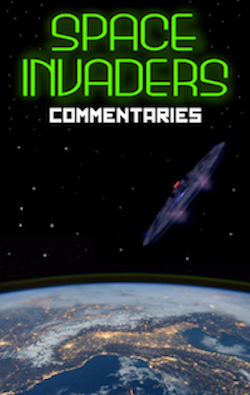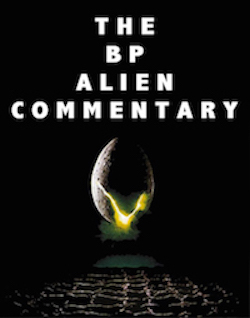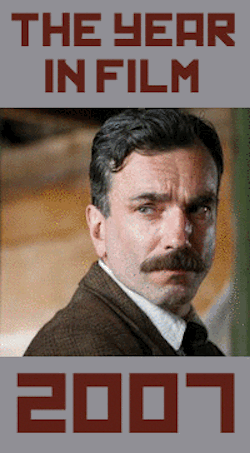Home Video Hovel: Beyond Zero: 1914-1918, by Dayne Linford
An exploration of the horror of war and its unalterable deformation of the international psyche, Bill Morrison’s Beyond Zero: 1914-1918 is a forty minute montage of footage from the Great War, when the notion of a world war as reality first announced itself. Heavily damaged by misuse and time, the footage takes shape through a century of decay, the chemical distortion, burn marks, and splits providing an almost thematic continuum throughout the film. This is art filmmaking of the highest and most extreme kind, as anti-narrative as it is actually ahistorical, a meditation on a theme as much as the musical piece it accompanies.
What narrative there is seems to be told largely from the American perspective, beginning with the spectral sight of a line of tanks approaching through a blue haze and a fog of corrosion, evoking the feeling of a war an ocean away, then moving into the political preliminaries to entry into the conflict, reading about it in news, President Wilson posing for the cameras, endless parades. Footage from the war itself follows, but describing it almost defeats the point and cheapens the experience of watching it – what matters here is not necessarily the content of the film, which floats from speeches to battles to transport and material, but the form of the image itself, encapsulated in its editing and musical accompaniment but most tellingly in its deterioration, and the complex interaction between all these seemingly disparate elements rendered whole in the viewing.
The nature of the film itself, often barely recognizable, creates an immediate and strange distance, forcing both an awareness of the artificial nature of the film as seen and of the authenticity of the capture – the reality of a war that has almost passed from living memory, the effects of which were devastating and remain with us to this day. As a viewer, this awareness creates an interesting juxtaposition, between the intellectual distance created by the use of sophisticated film and musical technique plus the unavoidable fact of the medium’s deterioration, and the emotional immediacy sharpened in this contrast, the poor quality of the film itself now pushing the reality of its subjects, the awareness of the devastation as witnessed, the violence as acted. As such, the deformity of the image itself works a strange kind of violence on its own content, conveying melancholia and horror as a relatively banal image, like a politician addressing the troops, is made suddenly remarkable and strangely beautiful by its near elimination from decomposition, forcing an awareness of the imminent mortality of the boys, now cut to, barely visible around the edge of decay, cheering patriotically.
As a cinematic experience, Morrison’s work is utterly unique, an exploration of historical, filmic, musical, and social themes presented simply, pure image paired with music, in a way that feels experimental and exciting. The footage used here has been almost entirely forgotten, left to regress over the course of decades. Under Morrison’s hands, it feels suddenly vibrant and impactful, an elegy for a departed time and a meditation on the war that overwhelmed it, as well as a reflection on the century between this war and now, arguably the most violent in human history. As that reflection, it is a piece about what our wars have done to us, ranging from technological development to social transformation. At one point, we see the faces and lives of the women left home, both before, during, and after the war, struggling to cope with such a cataclysm, to prepare and recover from it. Their faces are haunting, their humanity unmistakable.
This is a key part of what’s so extraordinary about this piece – by reducing these people to just accompanied image, Morrison actually fully humanizes his subjects, presenting them, yes, with technique, but without pretension, just as they are. Concurrently, he renders a war all-consuming in nature and apparently, though not psychologically, distant from our zeitgeist, as real and immediate, as just what it is, simply and without fanfare, as well as those who fought, survived, and died around it. Much of this is due to Morrison’s respect for the film itself, also left largely as it was found, making the imagery found within all the more striking. In one shot, a dog approaches a corpse lying amongst some foliage, maybe crops, still. It nuzzles at the body, a man trailing behind, who eventually calls for the ambulance, an innovation then. Even as the body is taken, the image of it, lonely and unremarkable, left among the plants, still lingers, so simply presented, just what it is: a portrait of dead youth, and a lost generation.













